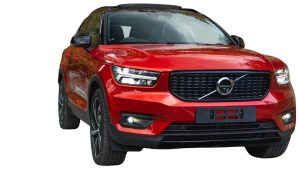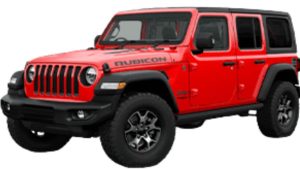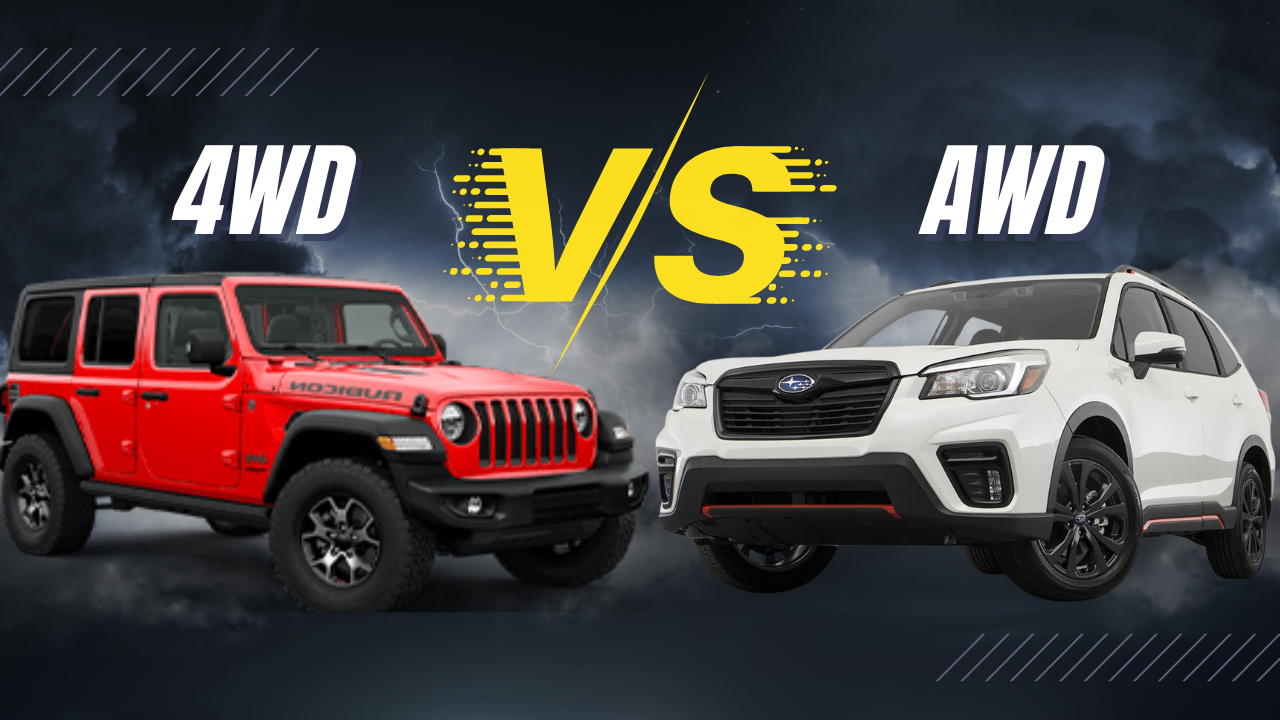AWD vs. 4WD, What’s The Difference, And Which One Is Better for You.
Hey! Do you know the major difference between AWD and 4WD, what are their advantages, and disadvantages, or which one is best for you? Read this blog till the end to find your perfect car.
While watching any advertisement for a car or purchasing a car yourself, you might have heard terms like AWD, 4WD, RWD, and FWD. All these are types of drivetrains, a cluster of motor vehicle parts that transmit power to the wheels. This means that although all cars have four wheels, in some of them, the engine powers forward two wheels (FWD) or rear wheels (RWD). In most SUVs and big cars, the drivetrain is AWD (All-wheel drive) or 4WD (4-wheel drive). Let’s understand more about AWD vs. 4WD.
The four-wheel drive, commonly called 4WD or 4X4, refers to a two-axle vehicle drive train that simultaneously provides torque to all the wheels of a vehicle. However, AWD is a system used in motor vehicles in which all four wheels are permanently connected to the power source. In either case, to get the power to both these vehicles, the engine’s power is first transmitted to a device responsible for managing the power supply and traction.
The four-wheel drive relies on a transfer case, which works like a locked differential, whereas an all-wheel drive system often uses a middle differential to split the engine’s torque between the two wheels.
There are a few more differences between AWD vs. 4WD:
The AWD systems have become more robust, and the 4WD has become more sophisticated.
AWD powers both the front wheels as well as the rear wheels at the same time. And on the other hand, 4WD uses a driver-electable mechanism in which the driver mechanically engages all four wheels when driving.
The AWD system has become an acceptable description for a car that drives all of the wheels at the same time. This means that it applies majorly to cars designed to use extra traction of 4WD in off-the-road situations. 4WDs are most commonly seen in both family and mid-size SUVs.
Let’s understand which one is better: AWD vs. 4WD. Depending upon what you need the system to do, either can be better. AWD is often constantly on, whereas 4WD has a toggle switch that allows the driver to switch between having it on or off. The drivers can determine the best system based on the vehicle’s primary use, driving style, geographic terrain and, most importantly, the budget. AWD and 4WD cars will provide you with better traction than two-wheeler vehicles.
What Does AWD Mean?

Let us understand what AWD means. All-wheel drive, the primary purpose of AWD, is centered around road driving. The AWD drives all the wheels simultaneously, so the system must limit the amount of wheel spin when the driven wheels lose grip as the power is applied. The AWD cars can provide better forward traction when accelerating, which is mainly helpful when driving on a sloppy road or moderate off-road terrain. It will help you get going when you are driving on muddy, snowy or other loose surfaces.
AWD vs. 4WD what Are The Advantages Of AWD?
Let us now talk about some of the advantages of AWD.
The AWD cars have more resale value than their 4WD counterparts. It is comparatively easier to sell AWD cars due to their widespread demand in the market. The demand for AWD vehicles is increasing as all-wheel drive systems have become lighter and more effective. It provides an off-roader style and high performance enhanced by on-road traction, making it even more popular.
-
They provide better traction
The AWD systems are known for providing better traction, and in addition, the AWD system will always provide power to all four wheels of a vehicle, so even if one wheel starts slipping, the others will compensate and make the drive on the slick road better. When we compare the traction properties to that of a 4WD, AWD certainly has the upper hand.
The cars with AWD will provide better acceleration on slippery roads.
What Are The Disadvantages Of AWD?
Everything has its advantages and disadvantages so let us now discuss AWD’s disadvantages.
In addition to higher costs at the time of purchase, the AWD system has low fuel efficiency compared to 4WD. Since the AWD cars are heavy, their engine needs to deliver more power to all four wheels. They have 4 to 10% more fuel requirements than 4WD.
Despite having a better resale value than 4WD, it’s still more expensive as compare to 4WD at the time of purchase. The AWD also has more maintenance costs as its system is more complex than 4WD. AWD cars are mostly SUVs, having large parts, and once they break, it is costlier to fix, adding to more expense.
-
Wrong idea embedded in people’s mind
People instantly prefer AWD cars because they think AWD systems are better when driving in slippery road conditions. They are unaware that an AWD system will assist you in accelerating more quickly; it will not affect how the car brakes or handles slippery weather. Similar to a four-wheel drive, there is no difference in handling or braking.
What is 4WD?

A 2WD is the drivetrain in which the engine powers either the front two wheels (FWD) or rear two wheels (RWD). A 4WD system combines the FWD (front-wheel drive) and RWD (rear-wheel drive) systems to work together for the engine to connect to and deliver power to all four wheels. It can transition between 2WD and 4WD as needed or be engaged at all times.
All 4×4 cars incorporate a system in which an automobile’s engine powers all four wheels equally. Large SUVs, such as Jeep Wrangler, and Toyota Fortuner, are 4WD, but even 4wd small cars like Jeep Renegade provides the 4×4 capabilities. This has its advantages and disadvantages as well.
AWD vs. 4WD what are the advantages of 4WD?
4wd has some advantages which can be:-
While driving in dangerous conditions such as snow, rocks or ice, or any other adverse weather conditions will make the car difficult to control. Here, the 4WD cars provide better traction control.
With better traction also comes an increase in power. Power is distributed to all four wheels instead of just two. This gives the 4wd an extra boost which is needed to drive.
The biggest motivation behind buying a 4wd is the unique features which are added to it. The 4wd has a spacious cabin and is ideal for large cars like SUVs, meant for big family road trips.
What are the disadvantages of 4WD?
Even the 4WD cars have a downside to them. Now let us introduce you to a few disadvantages of the 4wd cars.
The added power and weight of 4wd cars hampers their fuel economy, thus making them less fuel efficient.
-
Insurance and added costs
The 4wd is a little expensive, and insurance premiums are always higher. Besides this, the extra equipment and size of the car also increase the cost of its repair and maintenance.
The 4wd system creates overconfident drivers. Knowing that your car has more power and better traction might make you do dangerous things. 4wd makes the car heavier, which also leads to accidents.
Is AWD as good as 4WD in the snow?
Let us look at which car works better on snow. While most people think AWD is enough to take in dangerous snow drives, there is very little difference between 4WD and AWD-equipped vehicles when handling extreme weather conditions like snow. However, AWD might not be as good as 4wd in the snow because a 4wd delivers power to all four wheels so that they automatically engage torque when needed. Something like this can’t happen with AWD cars as the power in all 4 wheels is the same. Hence a 4WD would be a better car to drive in the snow.
Which one is better AWD or 4WD?
As we discussed, both cars AWD vs. 4WD, have advantages and disadvantages. They can equally suitable for a person given their requirements and the driver’s needs. Large trucks and SUVs used for towing and hauling heavy loads usually come with 4WD. This means the buyer that needs to carry heavy stuff shall consider 4WD. Smaller crossovers such as the Subaru Forester, Toyota or Honda and equipped with AWD because they are not meant for off-roading and heavy towing.
But if we compare 2WD vs AWD, AWD will have the upper hand.
Is 4wd safer than AWD?
Lastly, let us understand which is safer in AWD vs. 4WD.
AWD helps you go but does nothing to help you stop. The safety is in the hands of the driver and not the car. At the same time, 4wd will be better off-road as it provides the appropriate gearing needed for continuous rough terrain. AWD vehicles may not have restricted slips, which means that if one wheel on one end slips, the other will not respond even though the other end is unaffected. 4WD vehicles typically have greater clearance. Accordingly, 4WD is a safer option for an automobile than AWD.
ALSO READ: Top 10 Common car dashboard symbols and meanings
